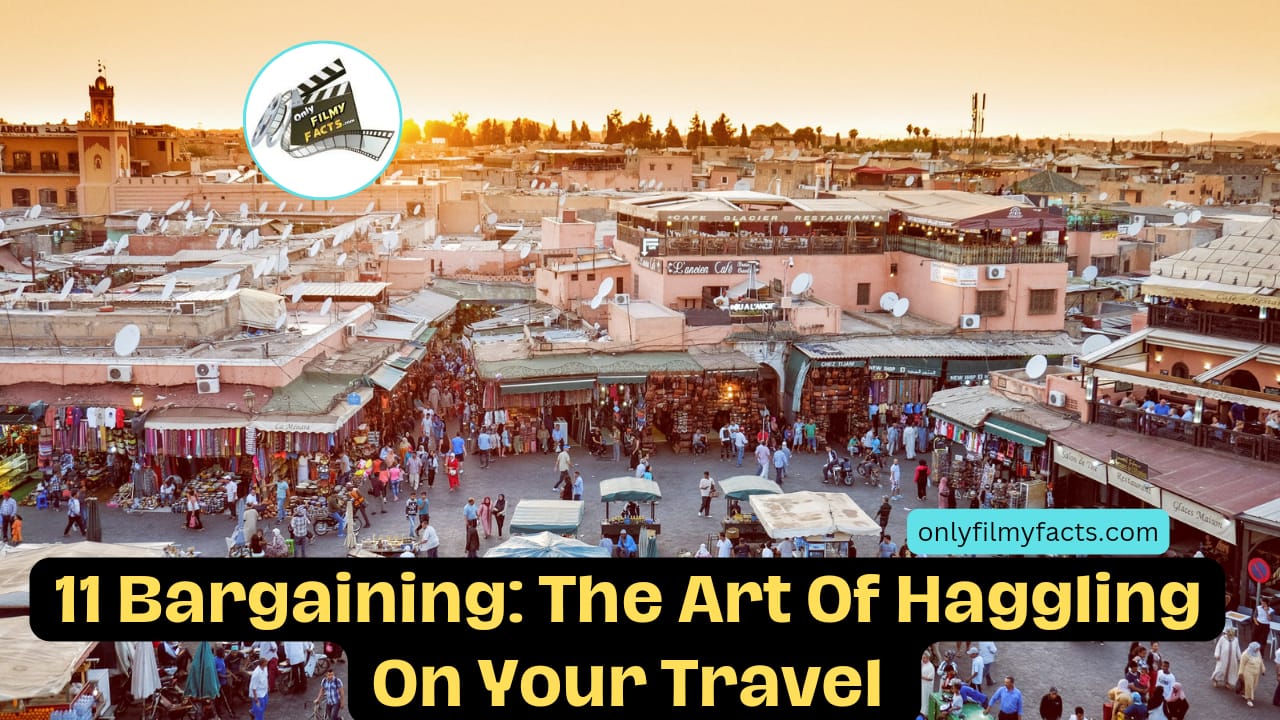In many cultures, haggling and bargaining are commonplace. It is regarded as a typical and frequently anticipated aspect of any shopping trip. I’m not the only one who finds this process to be a little uncomfortable at times. If I haggle, will they think I’m rude? What level of low is too low?
On the other hand, if you approach bargaining more as a social gathering that could help you get the best deal, you can do it politely and successfully.
The following advice will help you become a better negotiator while maintaining a relaxed and cordial demeanour with the locals:
1. Study the market
Before you attempt to strike your first deal, hop around, survey the market, and ask for some prices.
You need to know how the market operates and what can and cannot be negotiated, whether it is in an old Saudi souk, a souvenir market in Cancun, or a street market on Khao San Road.
Take your time and observe how the vendors “play” with one another and with other customers.
2. Learn a few catchphrases in their language
There’s Nothing opens the door for you like saying, “How are you?” or “How much?” in your destination’s native language. It’s not necessary to speak much of their language; a few words will make them smile and start the conversation.
3. If possible, strike a conversation before negotiating
Before attempting to start negotiations, spend a few minutes getting to know the merchant.You can establish a connection with them through small talk. If they have already taken the time to get to know you, they will be more willing to negotiate.
I got a scarf in a Cuzco, Peru market for 10 soles instead of the 70 soles my English friend paid for the same item after striking up a conversation in Spanish.
4. Know what you want, but look indecisive
Keep your cool, explore the area, and peruse their offerings. Don’t tell them you’ve fallen in love with anything if you like it. You forfeit all of your negotiating leverage if you do.

5. Start bargaining at a fraction of the asking price
Depending on what you’re buying, you can choose how low to start negotiating on your end.
Generally, you can begin your offer at any point between 25% and 50% of the marked price on markets where haggling is allowed. Although there’s a good chance that won’t be the final price, it does give you some leeway.
Nothing makes a negotiating game more disappointing than getting off to a bad start.
6. Be friendly
Remain composed and courteous at all times, and show the merchant constant respect. Mention in passing that if your friends will cooperate with you to reduce the cost, you’d be happy to recommend them.
7. Practice a little on inexpensive items
Try haggling a little before going for the larger items on items to which you are less attached and can therefore walk away if necessary.
8. Don’t make the first offer
To start, find out what their best price is on the item you want. This easy-to-ask question encourages the seller to extend the first offer.
Your ability to negotiate is diminished if you set a starting price because it cannot be lowered from there. Start really low, or less than half the marked price, if the seller doesn’t respond.

9. Decide how much you’re willing to spend on an item
Determine the highest amount you are willing to pay for that item before you begin negotiating. This will make it easier for you to concentrate on negotiating; when the price exceeds your desired amount, simply walk away.
10. Don’t be afraid to walk away
Make a final offer if the price gets too high. If that doesn’t work, be polite, give them your thanks for their time, and slowly move on to look at other things.
You will frequently receive a call back with your final offer. Sometimes you won’t, but you always have the option to move on to other shops and stalls or simply give up and take the lowest price they’ll take.
11. Always think of it more like a cultural experience rather than just shopping
Always approach the haggling process as a way to experience the unique character of the souks, bazaars, and street markets from around the world, regardless of how much you haggle or what price you end up paying.
This is a fun activity that frequently offers us a glimpse into their way of life and culture.

It’s true that we want to get things the cheapest possible, but remember, in many cases, every cent that you spend on them goes directly to their living and to feed their family.
Sometimes spending a few extra dollars than what we want actually does some good in this world, especially in poorer countries.

